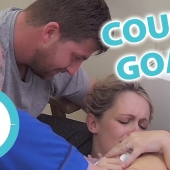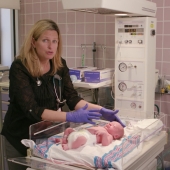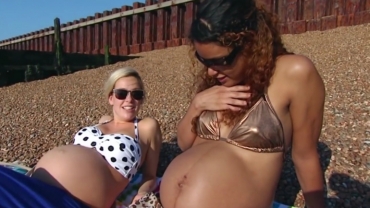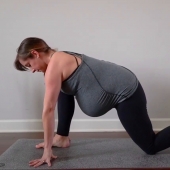Most pregnancies result in some degree of abdominal separation, a condition known as diastasis recti. This can lead to back pain, a weakened pelvic floor, and a stubborn post pregnancy pooch.
To check yourself at home, you want to start out by getting down onto a flat surface and a back lying position. Your knees should be bent and your feet should be on the floor. Then you're gonna take two to three fingers and place them right at the belly button, pointing down toward along the midline towards your pubic bone. Press down with some firmness, and then lift the head up off the mat. Good, and lower. And then lift up again.
You're feeling for the gully between the two halves of your rectus abdominus muscles and beautiful, and if there's a separation that means you have a diastasis. Now, you want to repeat that same check about two and a half inches below the navel, press down with firmness, and then lift and lower the head.
Make sure you don't lift the shoulders off the mat and you also don't want to lift the head to high off the mat. It's just a small lift. And then we're going to check one more site, about two and a half inches above the belly button. Press down, and then lift and lower the head.
If you felt a separation that's two fingers or wider apart, you do have diastasis recti. The good news is, recent medical research proves that the Dia Method exercises work to reverse post pregnancy pooch without surgery, no matter how long ago you had your kids. And even if you're among the lucky few who got through pregnancy without any degree of abdominal separation, these exercises will still work to firm and flatten your abs.
About video: Leah Keller, creator of The Dia Method, shows you how to check for diastasis recti (or abdominal separation) and discusses exercises that have been proven to treat it.
- 92 views













